Tasks covered by the solution
Estimating the orders schedule based on the actual operating rates of the enterprise
Finding bottlenecks and increasing the production capacity of the enterprise
Providing information about each operation to be completed, as well as the location of each production lot at any moment of time
Monitoring deviation between the actual and planned production prime cost
Online monitoring of equipment – which operation is being performed, what is the reason of equipment down time
Complete identification of production lots using barcoding, iBeacon
Maintaining a balance of production speed and product quality
SYSTEMS
Can work as a complete system and separately
IT solution benefits
Identify weaknesses in the target business area and help to build an effective management system
Reducing the time of orders processing within the production process by 10-30%
Reducing the work-in-progress by 5-10%
Reducing overtime work by 10-15%, avoiding emergency job
Reducing the finished products stock by 10-15%
Executing the production orders in time
Increasing production capacity without increasing the equipment fleet
Monitoring actual production load
Operational accounting of goods and materials
Get a quick 1-on-1 consultation
How the implementation takes place
Cases
The stories of companies that have already strengthened their business thanks to us
Industry solutions
We are ready to offer a comprehensive solution for optimization your business
Receive
our business proposal
Receive
our business proposal
Fill the form
our business proposal
our business proposal




